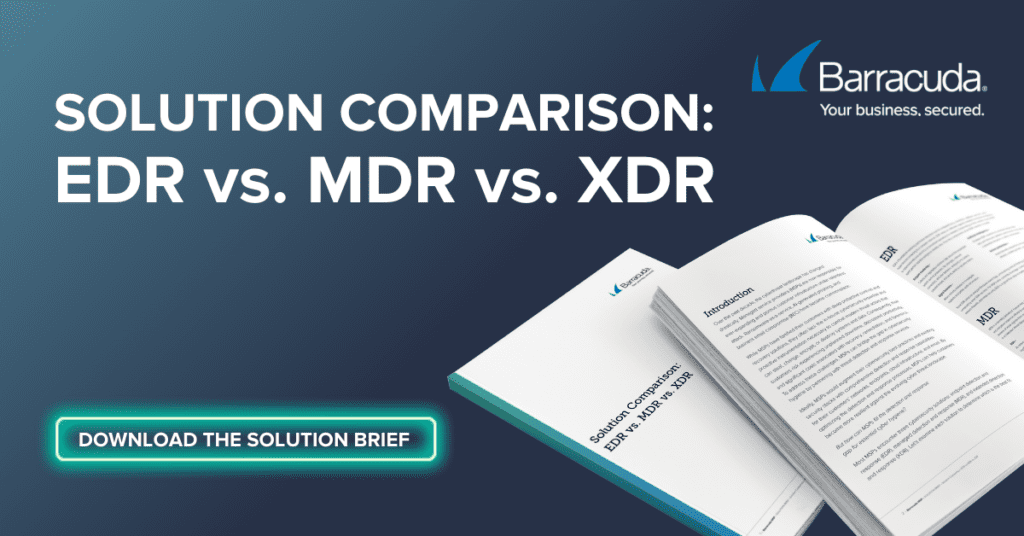 It’s no secret cyberattacks have grown in both complexity and numbers. New attack types have emerged while familiar ones have evolved, thus creating a critical need for strong cybersecurity solutions in place.
It’s no secret cyberattacks have grown in both complexity and numbers. New attack types have emerged while familiar ones have evolved, thus creating a critical need for strong cybersecurity solutions in place.
MSPs and their customers have an opportunity to pick from an array of solutions such as endpoint detection and response (EDR), managed detection and response (MDR), and extended detection and response (XDR). However, it’s important to understand what each solution offers and that there is no one-size-fits-all platform. Every MSP has varying requirements, internal resources, cost considerations, risk tolerance, and many more considering factors.
Let’s take a look at each solution’s use case:
EDR
EDR is a cybersecurity tool that identifies, responds to, and mitigates cyberthreats for endpoints only. Examples of endpoint devices include laptops, servers, mobile devices, and more. Due to the specificity of monitoring endpoints, these systems will miss potential attacks that occur elsewhere in the network such as email or the cloud.
Some of the key components of EDR include endpoint monitoring, active protection, artificial intelligence, and digital forensics.
MDR
MDR is a remotely delivered, human-led, fully managed security service for 24/7 threat monitoring, detection, and mitigative response efforts. It leverages a combination of technologies including EDR, security information and event management (SIEM), and network traffic analysis (NTA).
MDR vendors provide a turnkey service by leveraging a curated stack of security technologies melded together from many disparate vendors, strictly deployed across their customer portfolio. Their security operations center (SOC) then largely takes the security reins from the MSP and performs most response efforts on their behalf. Typically, it’s an all-or-nothing arrangement where customers must adopt all core services offered by the MDR vendor.
XDR
XDR is a turnkey platform, like MDR, but uniquely unifies EDR, SIEM, and NTA functionalities into one platform, safeguarding all IT assets with a single vendor. Unlike MDR, XDR accelerates response time by utilizing security orchestration, automation, and response (SOAR) capabilities. It integrates extensively with commonly used security tools, streamlining security operations.
With XDR, incidents that would not otherwise have been addressed before, will surface to a higher level of awareness. This allows security teams to remediate and reduce any further impact, minimizing the scope of the attack.
A few key components of XDR to call out are artificial intelligence (AI) and machine learning, automated response, extensive third-party integrations, comprehensive reporting, consolidated threat monitoring, centralized user interface, and a la carte packaging.
Managed XDR
This is an XDR solution that includes SOC-as-a-Service to augment the MSP’s internal team. The only difference between XDR and managed XDR is the addition of 24/7/365 SOC coverage. This type of solution can be ideal for those who lack in-house incident response skills or those who wish to expand their services without the burden of hiring, managing, and retaining staff.
Which one is right for you?
Every MSP is unique and has different requirements. There are various security platforms and solutions for MSPs and their customers. However, by utilizing an XDR approach (with other solutions like SOAR or SIEM) it provides 24/7 protection, better visibility, and faster response times to meet various security requirements while reducing costs and complexity. To learn more about the features and benefits of these solutions, download a copy of Barracuda’s new solution brief: Solution Comparison: EDR vs. MDR vs. XDR.

Photo: Gorodenkoff / Shutterstock
